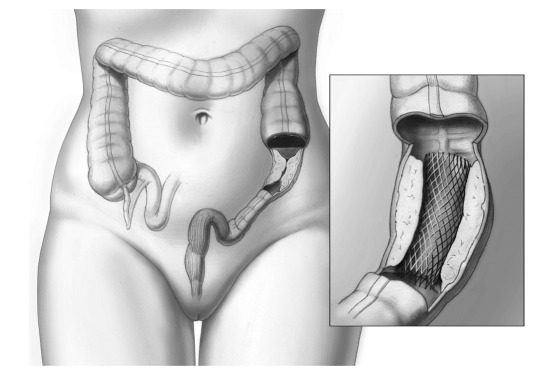Korean J Radiol.
2012 Feb;13(Suppl 1):S1-S11. 10.3348/kjr.2012.13.S1.S1.
ABC's of Writing Medical Papers in English
- Affiliations
-
- 1Division of Gastroenterology and Hepatology, Mayo Clinic, Rochester, Minnesota 55905, USA. baron.todd@mayo.edu
- KMID: 1372861
- DOI: http://doi.org/10.3348/kjr.2012.13.S1.S1
Abstract
- Publishing medical papers in English is important as English remains the predominant language for most medical papers (both electronic and traditional journal publications). In addition, journals with the highest impact factors are published in English and a publication in English thus enhances the visibility of authors and their institutions, and is important for promotion in some academic centers. This article reviews the basic principles that will help you successfully publish a manuscript in English. Although other books and articles are available on this subject, there are relatively few references. The present article is based on this author's experience of publishing nearly 400 articles in English. It will emphasize writing original articles, but the principles can be applied to virtually any type of manuscript.
Keyword
MeSH Terms
Figure
Cited by 1 articles
-
Improving Scientific Writing Skills and Publishing Capacity by Developing University-Based Editing System and Writing Programs
Edward Barroga, Hiroshi Mitoma
J Korean Med Sci. 2019;34(1):. doi: 10.3346/jkms.2019.34.e9.
Reference
-
2. Baillie J. On writing (4): submitting a manuscript for publication. Endoscopy. 2004; 36:821–824. PMID: 15326578.
Article3. Stiegmann GV, Goff JS, Michaletz-Onody PA, Korula J, Lieberman D, Saeed ZA, et al. Endoscopic sclerotherapy as compared with endoscopic ligation for bleeding esophageal varices. N Engl J Med. 1992; 326:1527–1532. PMID: 1579136.
Article4. Papachristou GI, Takahashi N, Chahal P, Sarr MG, Baron TH. Peroral endoscopic drainage/debridement of walled-off pancreatic necrosis. Ann Surg. 2007; 245:943–951. PMID: 17522520.
Article5. Chahal P, Baron TH, Poterucha JJ, Rosen CB. Endoscopic retrograde cholangiography in post-orthotopic liver transplant population with Roux-en-Y biliary reconstruction. Liver Transpl. 2007; 13:1168–1173. PMID: 17663414.
Article6. Rodríguez-Sanjuán JC, Arruabarrena A, Sánchez-Moreno L, González-Sánchez F, Herrera LA, Gómez-Fleitas M. Acute cholecystitis in high surgical risk patients: percutaneous cholecystostomy or emergency cholecystectomy? Am J Surg. 2011; [Epub ahead of print].
Article8. Telford JJ, Carr-Locke DL, Baron TH, Poneros JM, Bounds BC, Kelsey PB, et al. A randomized trial comparing uncovered and partially covered self-expandable metal stents in the palliation of distal malignant biliary obstruction. Gastrointest Endosc. 2010; 72:907–914. PMID: 21034891.
Article9. Kullman E, Frozanpor F, Söderlund C, Linder S, Sandström P, Lindhoff-Larsson A, et al. Covered versus uncovered self-expandable nitinol stents in the palliative treatment of malignant distal biliary obstruction: results from a randomized, multicenter study. Gastrointest Endosc. 2010; 72:915–923. PMID: 21034892.
Article10. Kamath PS, Bologna G. Impact factor: misused and overhyped? Hepatology. 2009; 49:1787–1789. PMID: 19475680.
Article11. Case DJ, Baron TH. Flexible endoscopic management of Zenker diverticulum: the Mayo Clinic experience. Mayo Clin Proc. 2010; 85:719–722. PMID: 20675509.
Article12. Baillie J. On writing: write the abstract, and a manuscript will emerge from it. Endoscopy. 2004; 36:648–650. PMID: 15243890.
Article13. PLoS Medicine Editors. Ghostwriting revisited: new perspectives but few solutions in sight. PLoS Med. 2011; 8:e1001084. PMID: 21912518.14. Baillie J. On writing (5): fabrication, falsification and plagerism in medical research and publishing. Endoscopy. 2004; 36:1008–1010. PMID: 15520921.
Article15. Gardner TB, Chahal P, Papachristou GI, Vege SS, Petersen BT, Gostout CJ, et al. A comparison of direct endoscopic necrosectomy with transmural endoscopic drainage for the treatment of walled-off pancreatic necrosis. Gastrointest Endosc. 2009; 69:1085–1094. PMID: 19243764.
Article16. Gluck M, Ross A, Irani S, Lin O, Hauptmann E, Siegal J, et al. Endoscopic and percutaneous drainage of symptomatic walled-off pancreatic necrosis reduces hospital stay and radiographic resources. Clin Gastroenterol Hepatol. 2010; 8:1083–1088. PMID: 20870036.
Article17. Gluck M, Ross A, Irani S, Lin O, Gan SI, Fotoohi M, et al. Dual Modality Drainage for Symptomatic Walled-Off Pancreatic Necrosis Reduces Length of Hospitalization, Radiological Procedures, and Number of Endoscopies Compared to Standard Percutaneous Drainage. J Gastrointest Surg. 2011; [Epub ahead of print].
Article
- Full Text Links
- Actions
-
Cited
- CITED
-
- Close
- Share
- Similar articles
-
- Difficulties experienced by endodontics researchers in conducting studies and writing papers
- Writing papers: literary and scientific
- On improving the English language ability of Science Citation Index papers for medical postgraduates through flipped classroom teaching
- Techniques of writing medical papers: a practical approach
- A Few Comments of the English Abstract Assessor


